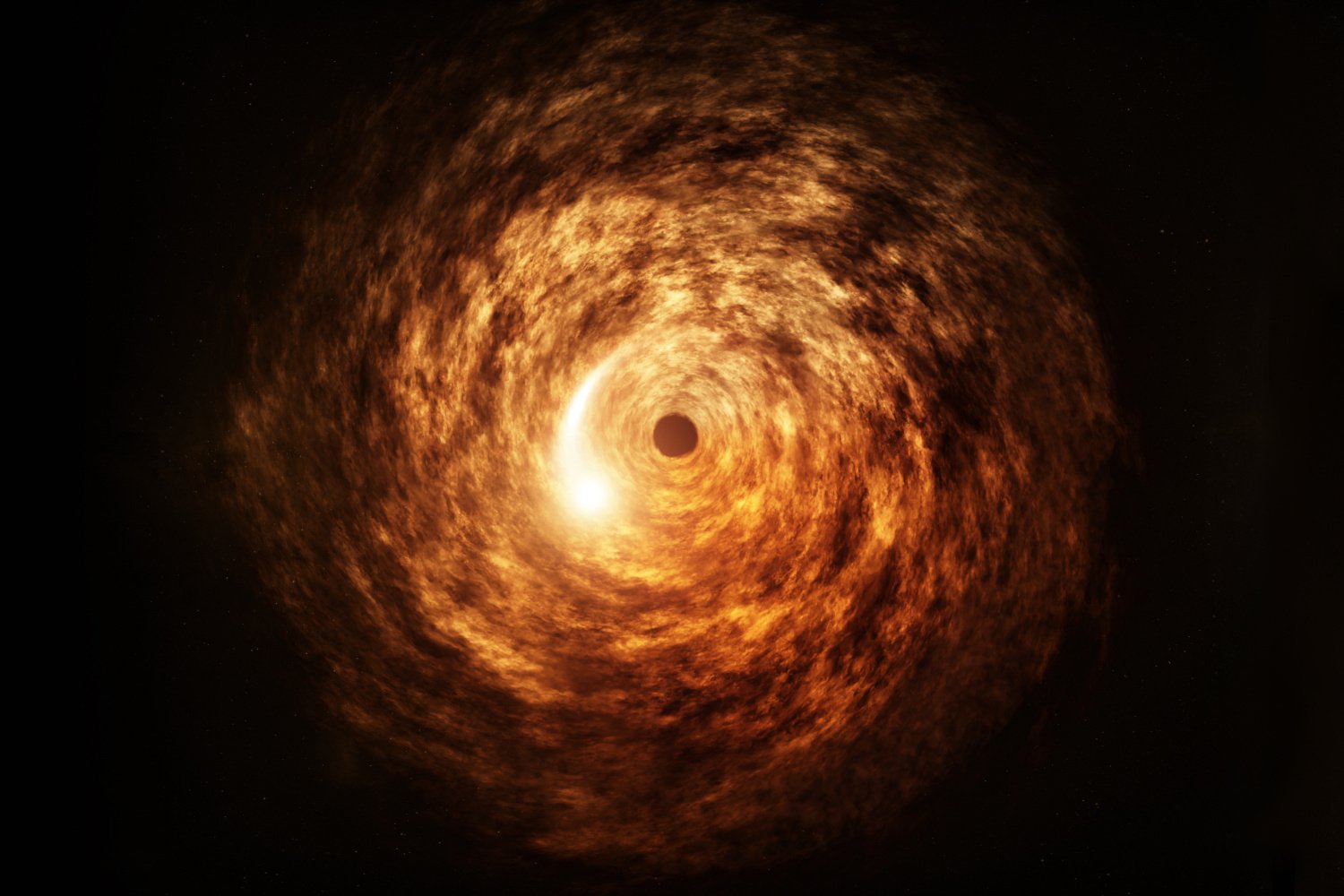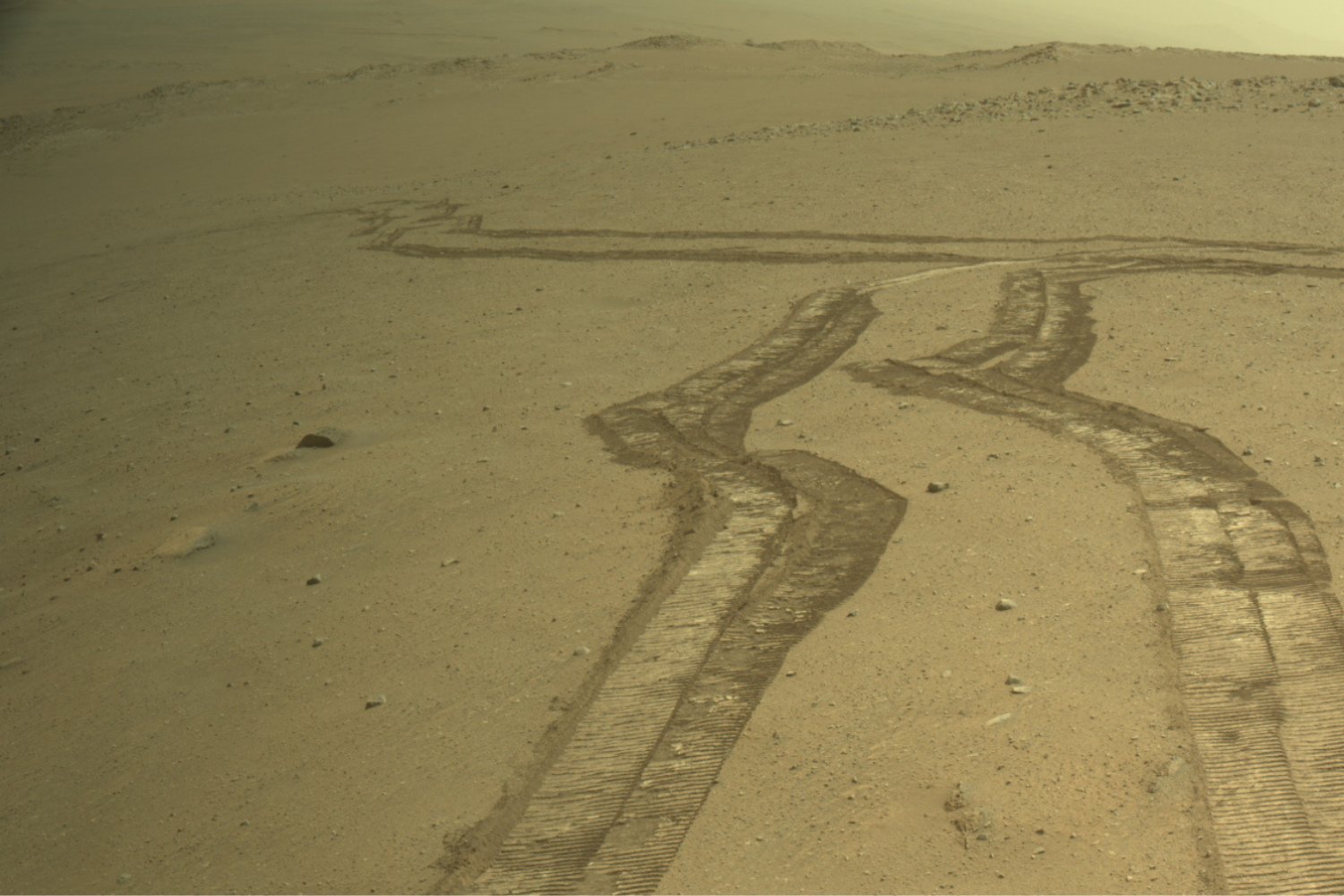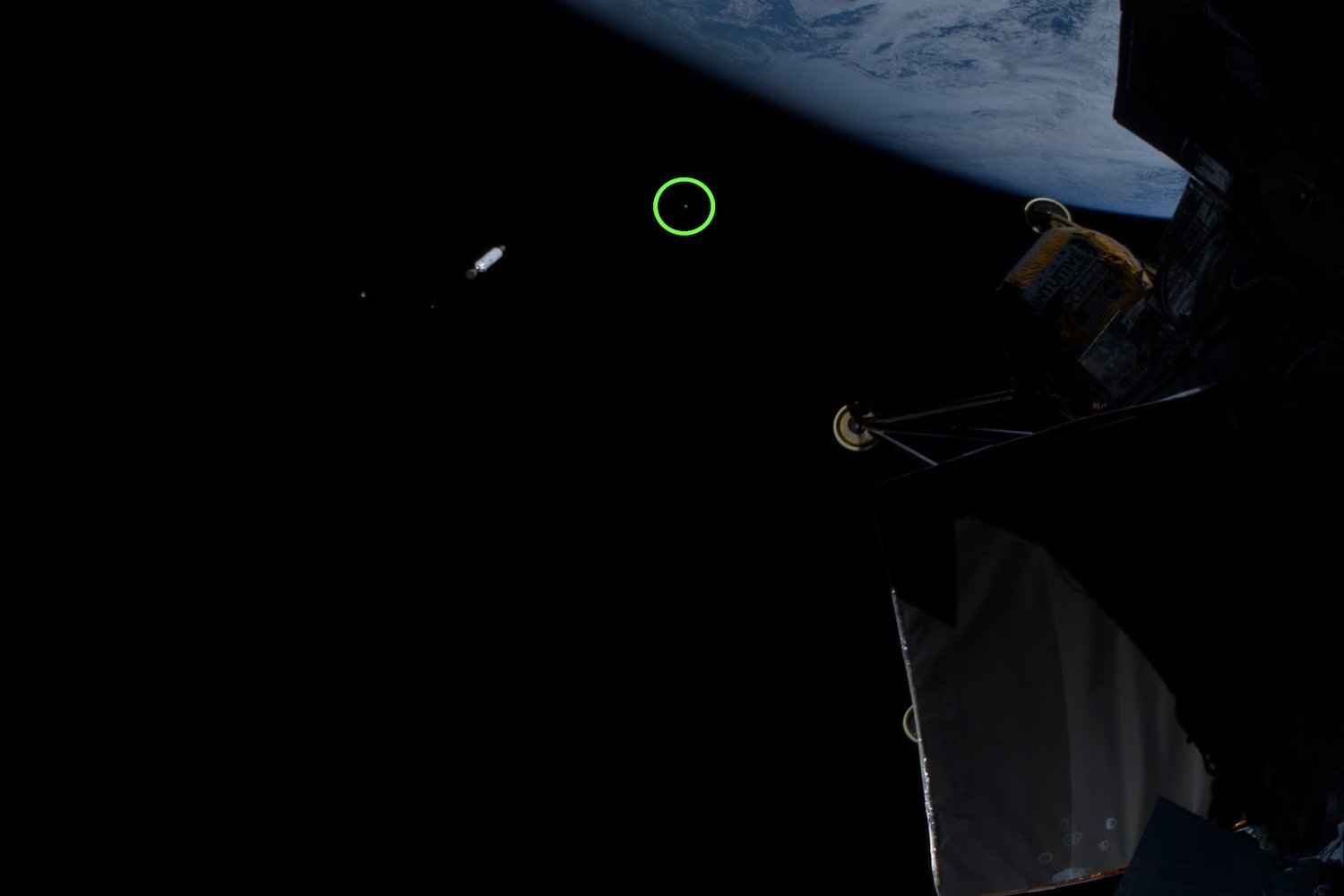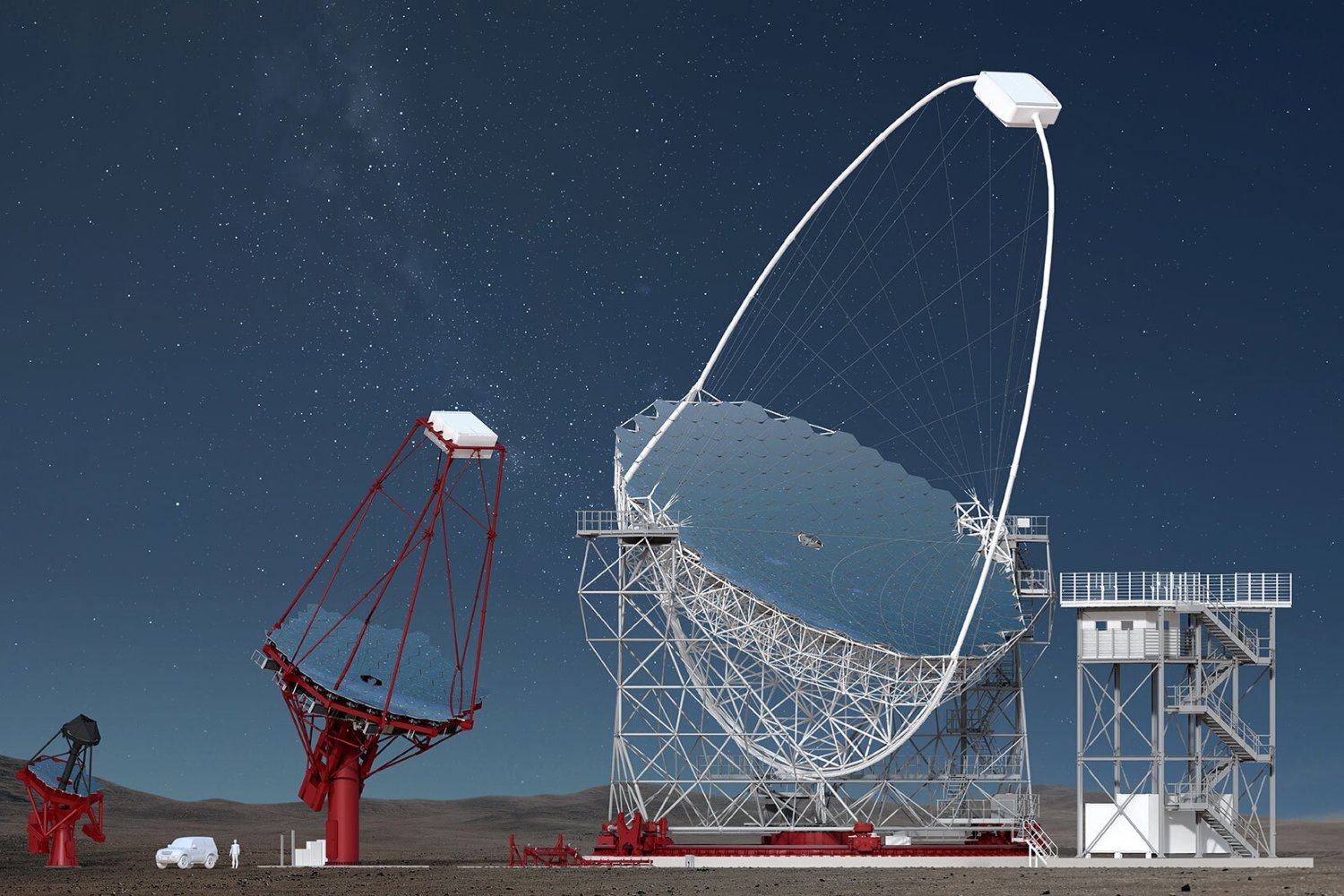The majority of galaxies observed by the James Webb Space Telescope (JWST) appear to rotate in the same direction, a finding that challenges the standard cosmological model and raises intriguing questions about the universe’s structure, according to research published in the Monthly Notices of the Royal Astronomical Society.
This surprising observation, based on an analysis of JWST’s Advanced Deep Extragalactic Survey (JADES), reveals a potential conflict with the Lambda Cold Dark Matter (ΛCDM) model, the prevailing theory describing the universe’s evolution. Lior Shamir, an astronomer at Kansas State University and lead author of the study, explained that roughly two-thirds of the 263 galaxies examined rotated clockwise, while only one-third rotated counter-clockwise. This imbalance is unexpected and difficult to reconcile with current cosmological understanding.
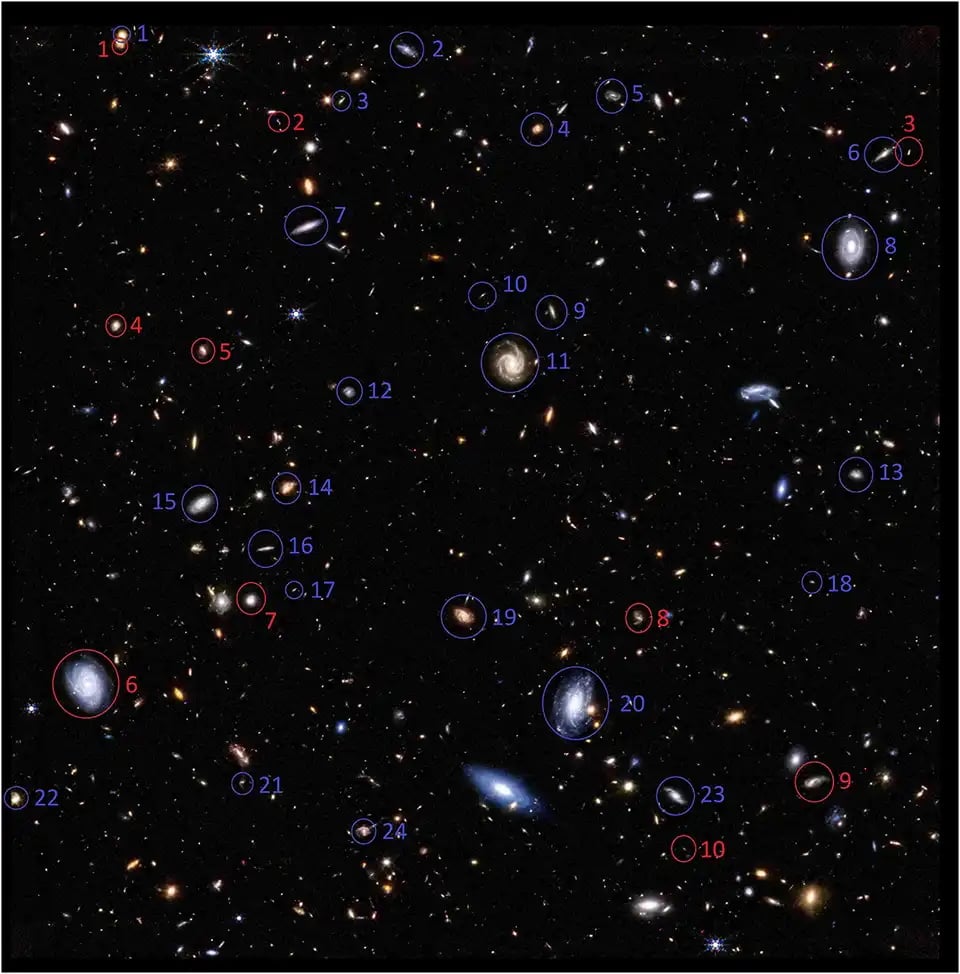 Spiral galaxies imaged by JWST that rotation in the same direction relative to the Milky Way (circled in red) and in the opposite direction (circled in blue.)
Spiral galaxies imaged by JWST that rotation in the same direction relative to the Milky Way (circled in red) and in the opposite direction (circled in blue.)
Could Our Universe Exist Within a Black Hole?
One intriguing possibility, though speculative, is that our universe resides within a black hole. Black holes are known to rotate, and if a preponderance of them rotate in a particular direction, it might influence the rotation of galaxies within them. This concept aligns with theoretical models suggesting that an observer inside a black hole might perceive it as infinitely expanding, while to an external observer, it remains finite.
This leads to the idea that our universe might be nested within a larger cosmos, existing as a “baby universe” inside a black hole of a parent universe. While not a new concept, the observed galactic rotation bias adds a compelling new dimension to the multiverse theory.
Alternative Explanations and Future Research
Another potential explanation for the uneven distribution of galactic rotation lies in the Milky Way’s own motion. Our galaxy’s rotation could influence the perceived rotation of distant galaxies, potentially skewing the observed data. Further research is needed to disentangle these effects and determine the true nature of galactic rotation.
The JADES survey, which has already yielded groundbreaking discoveries like potential dark matter stars and the most distant galaxy ever observed, promises to continue unveiling the mysteries of the early universe. Future observations will be crucial in confirming or refuting these findings and providing a deeper understanding of the universe’s fundamental structure and evolution.
Conclusion
The observation of a directional bias in galactic rotation presents a significant challenge to the standard cosmological model and introduces exciting possibilities about the nature of our universe. While the idea of our universe residing within a black hole remains speculative, it underscores the vast unknowns that continue to drive cosmological research. Future observations and analyses from projects like JADES will be critical to unraveling these mysteries and refining our understanding of the cosmos.



